Artwork Tips & Services
Sending Artwork
You can send your artwork to us quickly and easily by email, either to our general sales email (sales@zestpromotional.com), or directly to your account manager. If the file is quite large (over 10MB), it may be unreliable to send over email. In those cases we would recommend either using a file-sending service such as WeTransfer, MailBigFile, or Smash, or uploading to a cloud storage account such as Google Drive, Microsoft OneDrive, or Dropbox.
Where applicable, please ensure that raster files are at least 300dpi, and also ensure that if artwork requires a bleed any images or text touching the edges of the page extend into the bleed area.
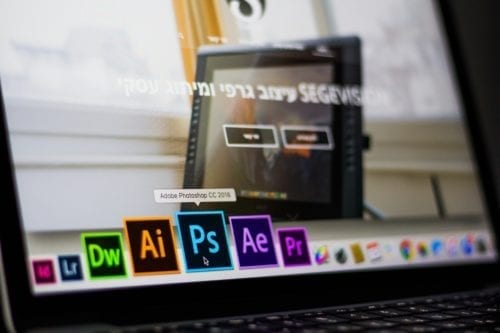
File Types
We accept most raster and vector image types, but you can see below for a list of what’s best. Do note that we can’t always accept complex raster files, because certain print processes simply won’t allow for it. In most cases, we’ll be happy to redraw your logo into a vector format if you only have it as a raster. If you’re unsure about anything, just send us an email or give us a call and we’ll be happy to help you out – we understand that not everyone is a print professional.
Preferred File Types
-
PDF (Portable Document Format)
Ensure any fonts are outlined and images are embedded.
-
AI (Adobe Illustrator File)
Ensure any fonts are outlined and images are embedded. We can accept files saved from any Illustrator version.
-
EPS (Encapsulated PostScript)
Ensure any fonts and images are embedded.
Other File Types
- JPG, JPEG (Joint Photographic Experts Group)
- PNG (Adobe Illustrator File)
- TIF, TIFF (Tagged Image File Format)
These file types are accepted on a case-by-case basis, but we’ll gladly help out if your artwork needs to be in a different format. Do note that simply changing the file extension (e.g. .jpg to .pdf) does not change the file type, and that simply placing a jpeg file inside a PDF does not turn the image into a PDF.
Raster vs Vector


Raster Images
Raster images are made up of small squares, called ‘pixels’. On your image, imagine a grid made up of thousands, or millions, of little squares. Each one of those squares corresponds to a specific colour value, which (when zoomed out) creates a full image. When scaling these images up or down, however, pixels are created or lost, which can degrade the quality of the overall image.
These are ideal for extremely complex images with lots of colour, such as a photographs.
The easiest way to tell if you have a raster image, is to zoom in. If the image becomes blurrier, and less clear, then you have a raster image. If it retains its visual sharpness, you have a vector image. You can see an example of this in the comparison tool above.


Vector Images
Vector images are different: they aren’t made up of pixels. Instead, they use mathematical formulas to define points, curves and lines. That means that your vector graphic can be scaled up or down infinitely, without losing any visual clarity or sharpness.
Vectors are ideal for simpler graphics, such as logos or text, since these are regularly scaled to fit multiple applications, and raster graphics would quickly appear blurry.
In the comparison image above, you can see the difference between a raster and a vector graphic in our editing tools. You can clearly see all of the points and curves that make up the vector, while the raster is just one whole image.
Also, certain branding methods require us to use vectors, since the machinery used (for example, embossing, debossing, laser engraving etc) needs those points and curves to determine how to apply the branding to your product.
Colour Systems
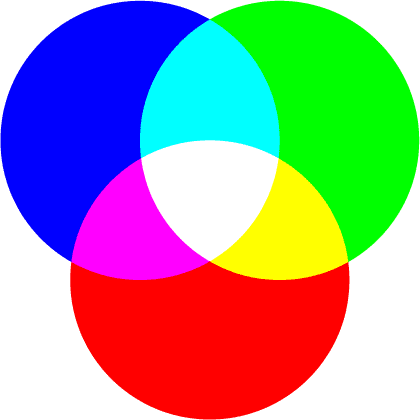
RGB Colour
The Red-Green-Blue colour system is used for anything digital. Just about everything you see on a screen will be shown as an RGB image – all by adjusting the makeup of light coming from each individual pixel.
This is what’s known as an additive colour model; the more light you add, the closer to white you get. Because of this, RGB displays are able to display much more vivid colour than can be achieved through printing.
With RGB however, everybody’s screen is calibrated differently. The way a colour appears on one screen may be significantly different to the way the same colour appears on another screen.
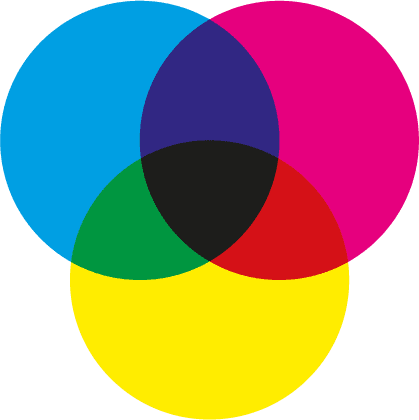
CMYK Colour
The Cyan-Magenta-Yellow-Key (Black) colour system is used for the majority of print applications. By printing differing tiny dots of these four ink colours close together, we can show an enormous range of colour.
CMYK is a subtractive colour model; the more ink you add, the closer to black you get. This is one of the reasons why CMYK is much better than RGB at showing darker colours. For example, to achieve a black image you may just use 100% black ink. However, this won’t appear as black as you might want it to. In that case, you can add more ink – and create what designers call ‘rich black’. A common recipe for rich black is 60% cyan, 40% magenta, 40% yellow, and 100% black – having 2.4x as much ink on the page gives you a much deeper black!
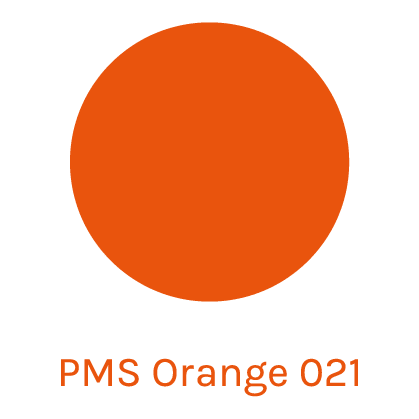
Spot Colour (Pantone)
Different from the previous two systems, spot colours are distinct inks with their own names. This means that you are limited to a few thousand colours rather than the millions that can be achieved with RGB or CMYK.
So why would we use spot colours? Specifically, the Pantone Matching System? Well this system was developed so that printers across the world, no matter who or where, would be able to exactly replicate the same colours. CMYK can have the same reproduction problems that RGB does, in that different inks and different printer setups won’t always give consistent results.
Pantone colours will. They’re typically used in brand logos, stationery etc, when matching the exact colour across multiple print runs from multiple printers really matters. We have a handy Pantone chart so you can get an idea of what each Pantone colour looks like (as well as your display can represent it).
Branding Methods
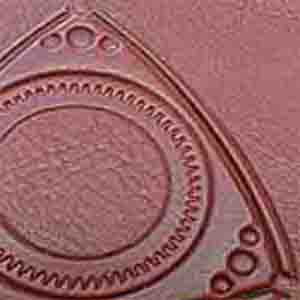
Embossed
The artwork is raised onto the surface of the product using a special die.
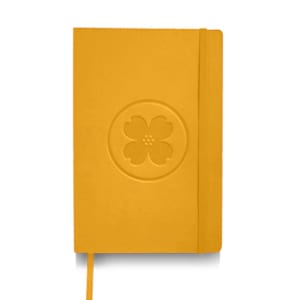
Debossed
The artwork is pressed into the surface of the product using a special die.
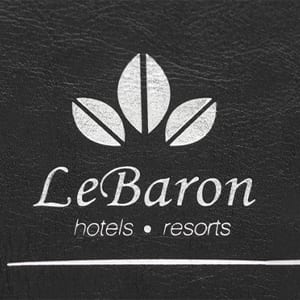
Foil Blocking
Similar to debossing, your artwork is stamped onto the surface using metallic foil and a hot die.
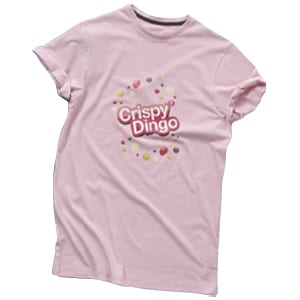
Screen printed
Your artwork is applied to the product by transferring ink through a mesh in layers.
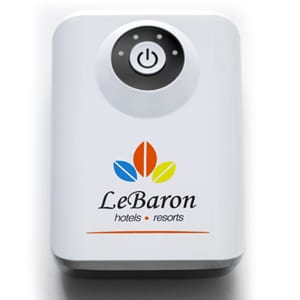
Pad Printed
The artwork is applied to the product with a soft ink pad. This is used on products which don’t have flat shapes.
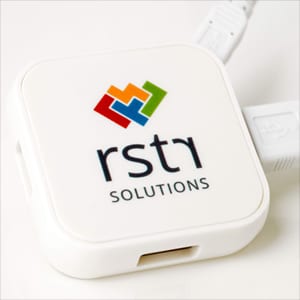
Process Printed
This is the standard CMYK printing method, used for artwork with lots of colour.
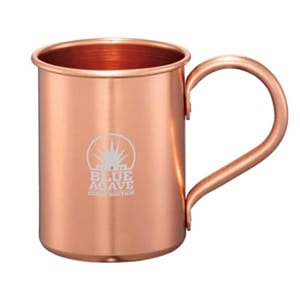
Laser Engraved
The artwork is engraved into the surface of the product using a high power laser.
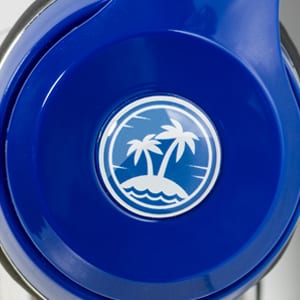
Doming
This creates a 3D version of your image, by printing an epoxy dome over your image.
Artwork Services
Zest Promotional offers you an in-house design service that can take anything from hand-drawn artwork to corporate style guides and uses them to create digital product mock-ups and print-ready artwork. We appreciate that not every company has this experience so let us take this hassle off your hands.
We will then supply these files to the factory if you proceed with an order saving you time, money and hassle.
Looking across the products listed below, there are different branding methods. Our team specialises in advising the best method for each product, whether that be:
- Conference folders;
- USB Sticks;
- Fridge Magnets;
- Shopping Bags;
- Travel Mugs, or;
- Any other product.
Learn more below to get a sense of the artwork design service we can deliver.




